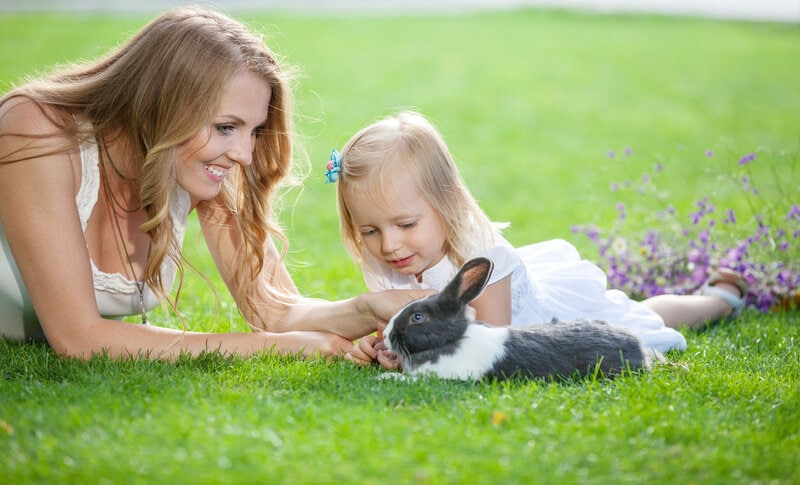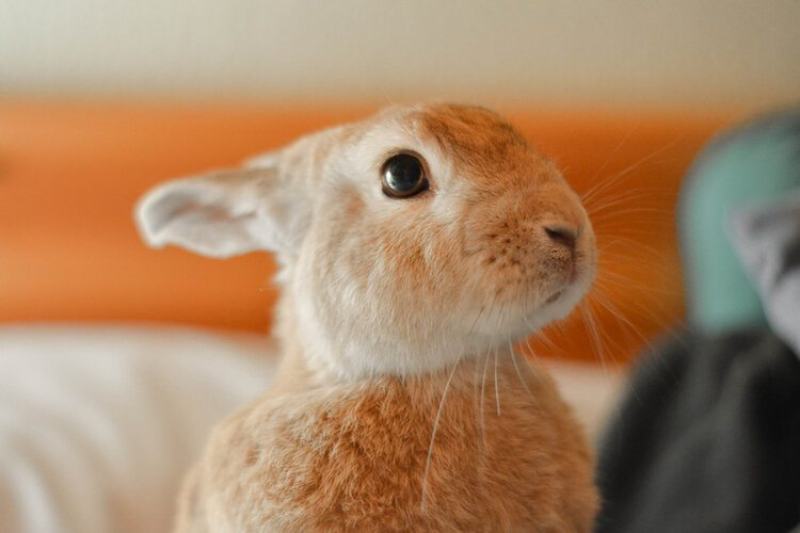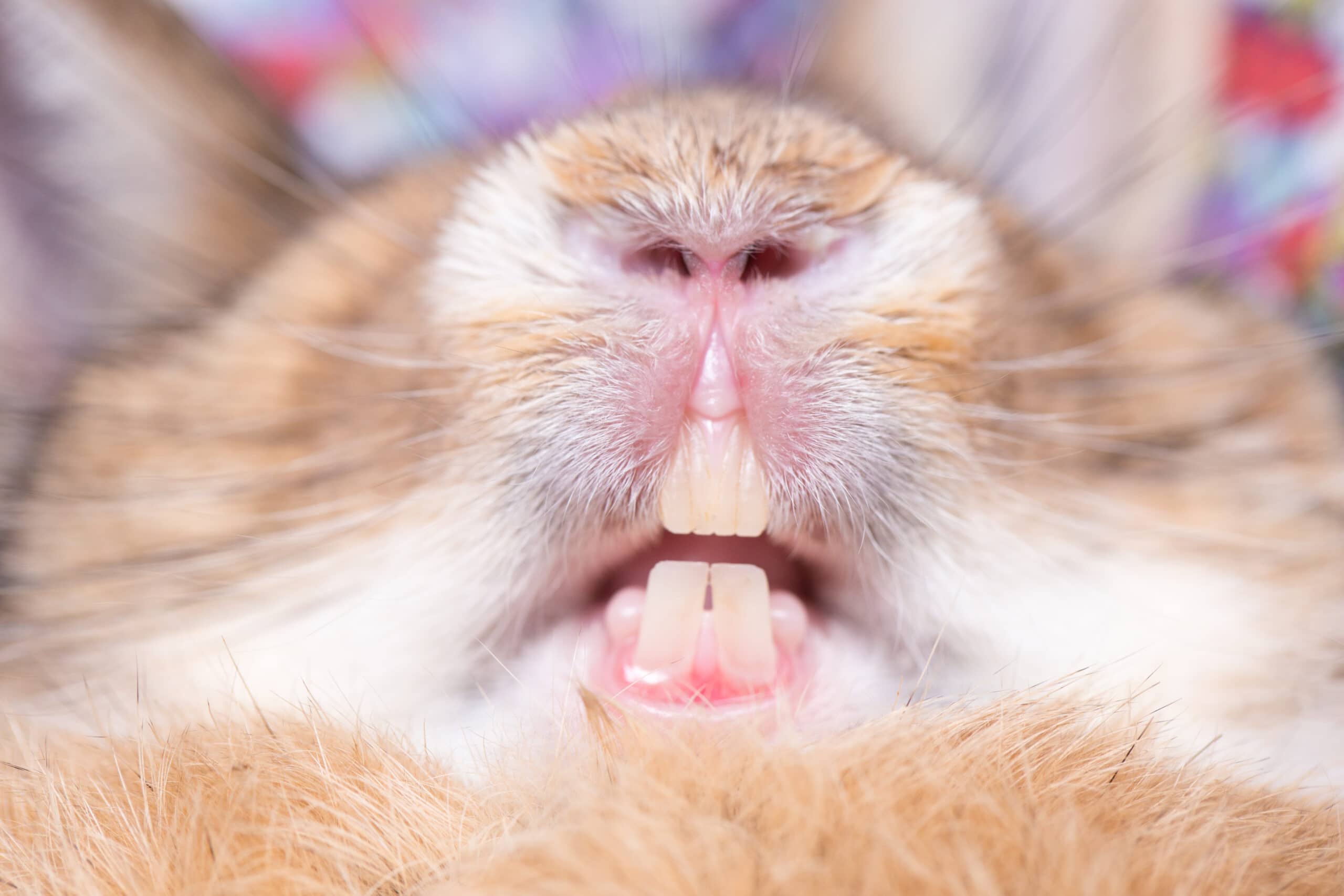Himalayan Rabbit: Info, Care, Diet, Pictures & More

Updated on
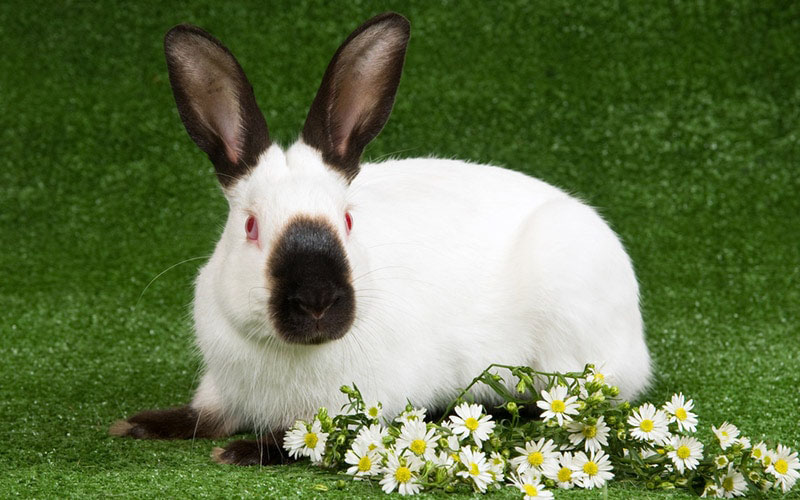
Click to Skip Ahead
Himalayan rabbits are known for their stunningly beautiful markings and gentle nature. These rabbits are a true delight to behold. The Himalayan rabbit breed originated in the United States, but its name pays homage to the majestic and awe-inspiring Himalayan Mountain range. With their striking color patterns, which feature vibrant blue eyes and dark points on their ears, nose, feet, and tail, these rabbits are a sight to behold. Whether you’re a seasoned rabbit owner or considering getting your first bunny friend, this guide will take you on a journey through the fascinating world of Himalayan rabbits, exploring their history, characteristics, care needs, and more.
| Size: | Medium |
| Weight: | 3–4 pounds |
| Lifespan: | 6–8 years |
| Similar Breeds: | Californian rabbit, Dutch, and Havana Dutch |
| Suitable for: | Experienced rabbit owners with other rabbits |
| Temperament: | Smart, friendly, docile |
Not only are Himalayan rabbits visually appealing, but they also have a gentle and friendly temperament, making them great pets for individuals of all ages. Additionally, Himalayan rabbits are relatively low maintenance, requiring regular grooming and a balanced diet to keep them healthy and happy. Whether you’re a seasoned rabbit owner or considering getting one for the first time, the Himalayan breed is definitely worth considering.
Himalayan Rabbit Breed Characteristics
 How Much Do These Rabbits Cost?
How Much Do These Rabbits Cost?
On average, you can expect to pay anywhere from $50 to $150 for a Himalayan rabbit. When it comes to the cost of Himalayan rabbits, several factors can influence the price. It’s important to note that Himalayan rabbits are a specific breed, known for their distinctive color patterns and markings. This uniqueness can often result in a higher price compared to more common rabbit breeds.
Also, the age and condition of the rabbit can also impact its cost. Younger rabbits, particularly those that have been well cared for and are in good health, may command a higher price than older or less healthy rabbits. And lastly, the reputation and location of the breeder or seller can also play a role in determining the cost. Established breeders with a strong reputation for producing high-quality Himalayan rabbits may charge more for their animals compared to less reputable sellers.
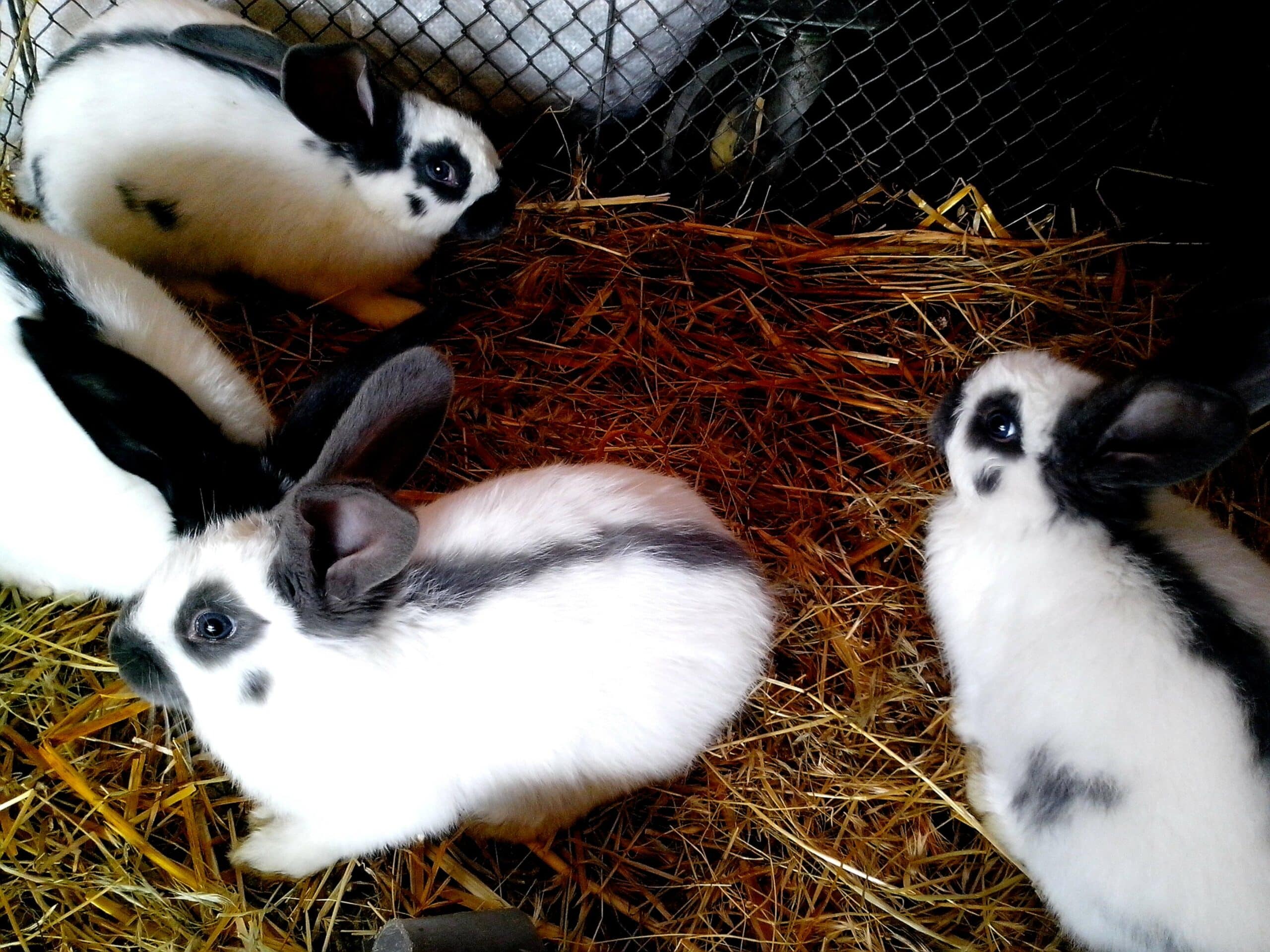
Temperament & Intelligence of the Himalayan Rabbit
Do These Rabbits Make Good Pets? 👪
Yes. One of the reasons why Himalayan rabbits make good pets is their low maintenance requirements. They’re relatively easy to care for and don’t require excessive grooming. Regular brushing and nail trimming are usually sufficient to keep their coat healthy and prevent any matting. Additionally, they have a clean nature, believe it or not, and tend to keep themselves tidy. Their litter box training also makes them an ideal choice for indoor pets.
Himalayan rabbits are also known for their friendly and social personalities. They enjoy human company and are often described as affectionate animals. They can form strong bonds with their owners and enjoy being petted and cuddled–they rarely bite or scratch like other breeds may. This makes them suitable pets for individuals seeking a loving companion.
Does This Rabbit Get Along With Other Pets?
Himalayan rabbits, like any other rabbits, can have varying degrees of compatibility with dogs. While some rabbits may get along well with dogs, others may not. It largely depends on the individual rabbit’s personality and the dog’s temperament. It’s important to introduce the animals slowly and carefully, and closely supervise their interactions. Dogs are natural predators and may view rabbits as prey, so it’s crucial to ensure the safety of both animals. Additionally, rabbits are delicate creatures and can easily be injured by a dog’s rough play or chasing instincts.
As far as cats and other pets (like hamsters and turtles), they get along with them just fine, due to their laid-back temperament. However, it’s still essential to supervise all introductions and ensure that both animals are comfortable with one another. These rabbits may become territorial if they feel that their personal space is invaded or if they feel threatened in any way, so making sure they’re comfortable and taking note of their reaction is important.
Things to Know When Owning a Himalayan Rabbit:
Food & Diet Requirements 🥕
Himalayan rabbits, just like any other rabbit breed, require a specific diet to ensure their overall health and well-being. A balanced diet is essential for these furry creatures, as it provides them with the necessary nutrients and energy they need to thrive. The diet of a Himalayan rabbit should primarily consist of fresh hay and grass, which helps promote healthy digestion and prevents dental issues.
Rabbits can also benefit from fresh fruit, pellets, and vegetables like greens, carrots (yes, they actually love carrots), celery, and cucumbers. It’s crucial to introduce new foods gradually, as sudden changes in their diet can lead to digestive problems. Fresh water should always be available for the rabbits to drink, and it should be changed regularly to ensure cleanliness.
Habitat & Hutch Requirements 🏠
These rabbits are medium-sized, weighing between 2.5 to 4 pounds, and have specific needs that must be met in terms of their living space.
Spacious Hutch
First, it’s important to provide Himalayan rabbits with a spacious hutch that allows them ample room to move around and exercise. The hutch should be at least four times the size of the rabbit, ensuring they have enough space to hop, stretch, and play in general. A hutch that is too small can lead to physical and behavioral problems for the rabbit, such as obesity or aggression–yes, they can actually get aggressive.
The hutch should also have solid flooring to prevent any injuries to the rabbit’s delicate feet. Wire flooring isn’t really suitable for Himalayan rabbits as it can cause sore hocks and discomfort. So instead, opt for a solid surface like wood or plastic that is easy to clean and provides a comfortable surface for the rabbit to rest on.

Temperature & Humidity
In terms of temperature regulation, these rabbits aren’t well-suited to extreme heat or cold. Therefore, it’s important to place their hutch in an area that’s tucked away from direct sunlight and A/C units or cold drafts. If the weather becomes too hot or cold, additional measures may be necessary, such as providing a fan or heater to maintain a comfortable temperature for the rabbit.
Bedding
Another essential aspect of the rabbit’s habitat is bedding material. Choose a bedding that is safe, absorbent, and easy to clean. Avoid using cedar or pine shavings as these can be harmful to the rabbit’s respiratory systems. Instead, opt for materials like paper-based bedding or hay, which provide comfort and allow for natural burrowing behaviors.
Entertainment
Additionally, it’s crucial to provide Himalayan rabbits with plenty of mental stimulation to prevent boredom and promote their overall well-being. This can be achieved by placing toys, tunnels, and hiding spots in their hutch. These enrichments will keep the rabbits entertained and engaged, preventing them from becoming stressed or developing destructive behaviors.
Exercise & Sleeping Needs 🐇
Himalayan rabbits, like any other breed of rabbit, have specific exercise and sleeping needs that are essential for their overall health and well-being. These needs can vary depending on the individual rabbit’s age, health, and living environment. However, some general guidelines can help ensure that Himalayan rabbits receive the appropriate amount of exercise and sleep.
Exercise is crucial for Himalayan rabbits to maintain a healthy weight and prevent obesity. These rabbits are naturally active animals, and they require regular physical activity to keep their muscles toned and their minds stimulated. It’s recommended that Himalayan rabbits have at least 4 hours of exercise time outside of their cages each day. This can be achieved through supervised playtime in a secure area of the house or by allowing them access to a rabbit-proofed room. During this exercise time, ensure that the environment is safe and free from hazards like electrical cords or poisonous plants (i.e., Lilies, Daffodils, Azalea, etc.).
Like most rabbits, Himalayans are crepuscular animals, which means they’re most active during dawn and dusk. During these times, they may be more energetic and require less sleep. However, it’s still important to provide them with a quiet and comfortable sleeping area where they can rest undisturbed.
Himalayan rabbits should have a dedicated space in their cage or enclosure where they can retreat to sleep. This area should be cozy and lined with soft bedding material, such as straw or hay. The amount of sleep required by Himalayan rabbits can vary, but on average, they need approximately 8–10 hours of uninterrupted sleep each day. To ensure they get enough nap time, it’s important to create a calm and quiet environment for them during their sleeping hours.

Training 🥎
While rabbits in general aren’t as easily trained as dogs or cats, it’s possible to train Himalayan rabbits to a certain extent. One of the first things to understand about training Himalayan rabbits is that they’re prey animals and have a natural wariness of humans–in short, they’re skittish, almost like deer. This can make training more challenging, as rabbits may be more timid and less inclined to trust humans. However, with patience and persistence, it’s possible to build a bond with a Himalayan rabbit and train them to some degree.
Litter Box
One common (and much-needed) area where Himalayan rabbits can be trained is in litter box training. Like cats, rabbits can be taught to use a litter box for their bathroom needs. This can be achieved by placing a litter box in the rabbit’s enclosure and placing some of their droppings in the box to encourage them to use it. With a bit of consistency and positive rewards, like treats or praise, the rabbit can learn to associate the litter box with their bathroom routine.
Socialization
Another aspect of training Himalayan rabbits is socialization. Rabbits are social animals and benefit from interaction with humans and other animals. By spending time with your Himalayan rabbit, handling them gently, and providing positive experiences, you can actually help them become more comfortable around people and reduce their natural wariness. This can make training easier and help them become more well-rounded pets.
One of the first steps in training a Himalayan rabbit is to establish a bond based on trust and respect. Spending quality time with the rabbit, providing them with a safe and comfortable environment, and offering treats or rewards when they exhibit desired behaviors can help build this bond. You can visit YouTube or Instagram to see videos of owners teaching their pet rabbits tricks and other commands.
Grooming ✂️
Grooming plays a crucial role in maintaining the health and well-being of any pet, including Himalayan rabbits. While they may not require as much grooming as some other breeds, regular grooming is still necessary to keep their fur clean and prevent any potential health issues. Himalayan rabbits have a beautiful coat that requires regular brushing to remove any loose fur, knots, or debris–it can also help ward off parasites that may be on their skin. This helps to keep their fur clean and free from mats, which can lead to discomfort and skin problems (like fungal infections and fleas). Additionally, grooming allows you to check for any signs of illness or injury, such as parasites or skin irritations.
One important aspect of grooming a Himalayan rabbit is maintaining their long fur. Their coat is dense and prone to matting, so regular brushing is essential. Using a soft brush or comb, gently remove any tangles or knots from their fur. Be careful not to pull or tug on the fur, as this can cause discomfort or even injury to the rabbit. It’s also recommended to trim their fur if it becomes too long, especially around the hindquarters and tail area. This prevents fecal matter from getting stuck in the fur and causing hygiene issues.
In addition to brushing and trimming, it’s important to regularly check your Himalayan rabbit’s nails. Overgrown nails can cause discomfort and even lead to mobility issues. If you aren’t comfortable with trimming their nails yourself, it’s best to seek the assistance of a professional groomer or veterinarian. They can safely trim the nails without causing any harm to the rabbit.
Lastly, proper dental care is crucial for the overall health of your Himalayan rabbit. They have continuously growing teeth that can become overgrown or misaligned if not properly cared for. Providing them with appropriate toys and chewable items helps to keep their teeth in check. Regular vet check-ups are also recommended to ensure that their teeth are healthy and to address any dental issues that may arise.

Lifespan & Health Conditions 🏥
- Dental issues
- Arthritis
- Respiratory issues
- Rabbit Hemorrhagic Disease
- Rabbit hemorrhagic disease
- Gastrointestinal stasis
- Myxomatosis
Rabbit hemorrhagic disease (RHD) is a highly contagious viral infection that affects rabbits of all breeds. While this disease can affect various breeds of rabbits, the Himalayan rabbit is known to be particularly susceptible. RHD is caused by a calicivirus and can spread rapidly through direct contact or contaminated objects, such as food, water, or bedding.
The virus attacks the rabbit’s liver and other organs, leading to internal bleeding and eventual death. Signs of RHD can include fever, loss of appetite, lethargy, and sudden death. Precautions to prevent the spread of this disease include proper hygiene practices, such as disinfecting cages and equipment regularly, as well as vaccination against RHD.
Gastrointestinal Stasis
Another serious condition that affects Himalayan rabbits is gastrointestinal stasis, also known as “GI stasis.” This condition occurs when the digestive system slows down or comes to a halt. It can be caused by various factors such as stress, inadequate diet, lack of exercise, or underlying health issues. GI stasis can be life-threatening if not treated promptly, as it can lead to dehydration, bloating, and potentially fatal complications. Some signs of GI stasis include reduced or absent appetite, reduced or no fecal output, and lethargy. So, if you notice any of these signs, be sure to take your rabbit to the vet ASAP.

Myxomatosis
Myxomatosis is often thought to be a bacterial disease, but it’s actually a viral one that affects various species of rabbits, including the Himalayan breed. This highly contagious disease is caused by the Myxoma virus and is primarily transmitted through fleas, mosquitoes, and direct contact with infected rabbits. Unfortunately, the Himalayan rabbits are particularly susceptible to this disease due to their genetic makeup and certain characteristics of their immune system.
One of the reasons why Himalayan rabbits are prone to myxomatosis is their lack of natural resistance to the virus. The breed’s genetic makeup makes them more susceptible to contracting the disease and developing severe symptoms. Also, their immune system may not be as efficient in fighting off the virus compared to other rabbit breeds. Given the vulnerability of Himalayan rabbits to myxomatosis, it’s really crucial for rabbit owners and breeders to take preventative measures. These may include regular vaccination, proper hygiene practices, and keeping the rabbits in a clean and pest-free environment.
Dental Issues
One of the most prevalent serious conditions seen in Himalayan rabbits is dental problems. Rabbits have continuously growing teeth, and if they become misaligned or overgrown at any point (which can easily happen), this can lead to serious health problems. Malocclusion, where the teeth do not meet properly, can cause pain, difficulty eating, and even abscesses in the jaw. Overgrown teeth can also lead to similar problems, as well as the risk of the teeth breaking or actually getting stuck in the rabbit’s mouth. Regular dental check-ups and providing appropriate chew toys and a diet high in fiber can help prevent these dental issues.
Arthritis
One serious condition that is more commonly seen in older Himalayan rabbits is arthritis. Arthritis is a degenerative joint disease that causes inflammation and pain in the joints. As rabbits age, their joints may start to deteriorate due to wear and tear. Signs of arthritis in rabbits include difficulty moving, limping, reluctance to jump or climb stairs, reduced activity levels, and changes in behavior. While there is no cure for arthritis, there are actually ways to manage the condition and improve the rabbit’s quality of life. This may involve providing a soft and comfortable living environment, offering ramps or stairs instead of jumps, and using pain management techniques prescribed by a vet.

Respiratory Issues
Lastly, another serious condition that can affect Himalayan rabbits is respiratory infections. Rabbits are susceptible to upper respiratory infections, which can be caused by bacteria, viruses, or environmental factors. Signs of respiratory infections in rabbits include sneezing, nasal discharge, difficulty breathing, loss of appetite, and lethargy. Prompt vet care is necessary to diagnose and treat respiratory infections in rabbits, as they can quickly become severe and even lead to pneumonia in some cases. So, keeping the rabbit’s living environment clean, providing proper ventilation, and avoiding exposure to cigarette smoke or other irritants can help prevent respiratory infections.
Male vs Female
There is little to no difference in male and female Himalayan rabbits as far as their size and their temperament. However, female rabbits are highly prone to uterine cancer, and considering how quickly and how often rabbits can reproduce, it’s important to have a female rabbit sprayed as soon as possible to prevent unwanted litters and reproductive health issues.
3 Little-Known Facts About Himalayan Rabbit
1. They have a unique coat.
Probably the most striking feature of Himalayan rabbits is their beautiful coat color. These rabbits have a pure white coat with dark-colored points on their nose, ears, feet, and tail. The dark coloration is actually a result of a genetic mutation that causes the pigmentation to be restricted to specific areas of the rabbit’s body. This color pattern gives the Himalayan rabbits a stunning and elegant appearance, making them a popular choice among rabbit enthusiasts.
2. They’re known for their chill demeanor.
Himalayan rabbits are known for their calm and gentle temperament. They’re generally docile and friendly, which makes them great pets for families and individuals alike. These rabbits enjoy human companionship and can bond well with their owners. Due to their calm nature, they’re also often used as therapy animals in certain settings, providing comfort and relaxation to people in need.
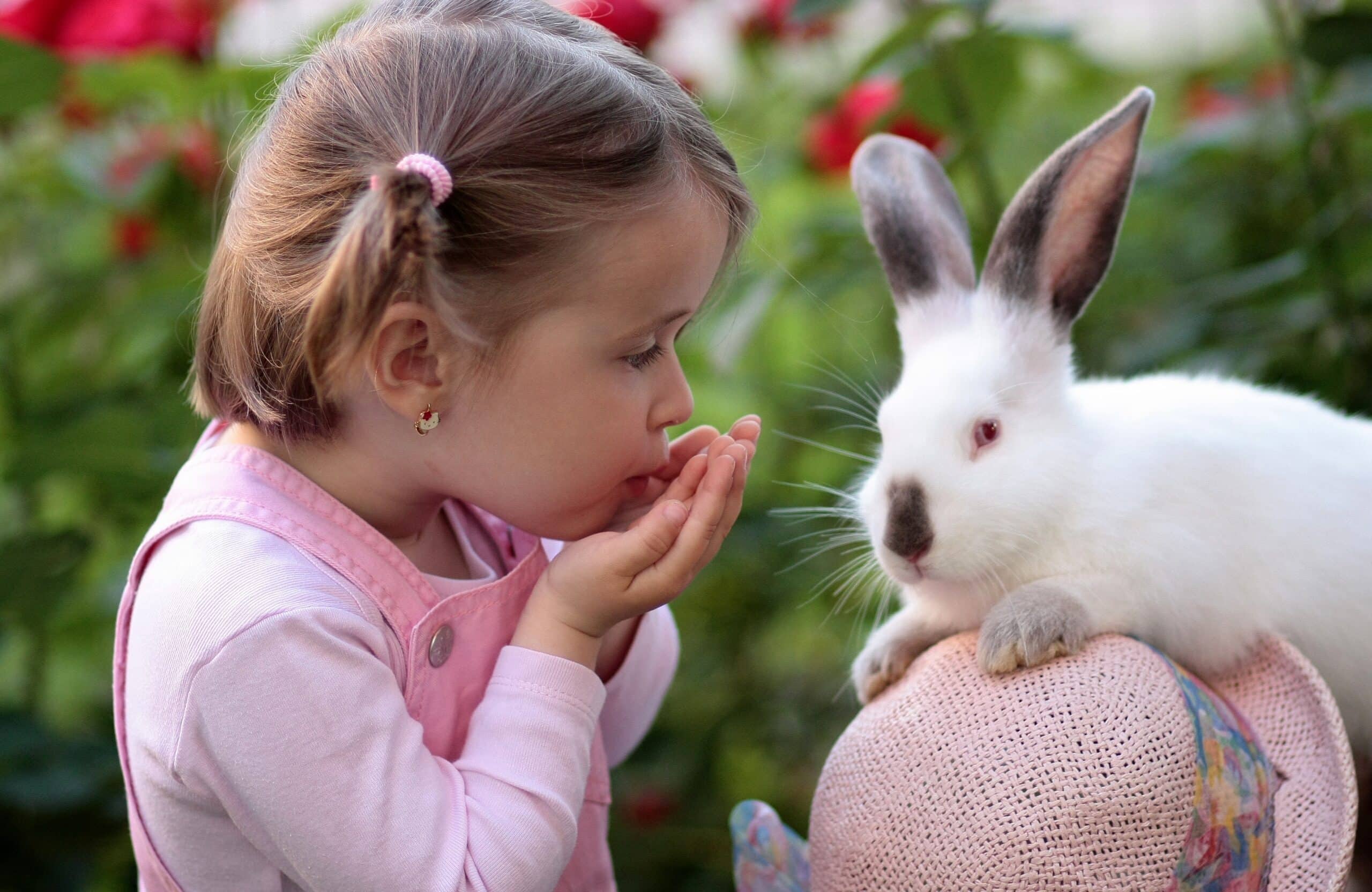
3. They’ve adapted to cold weather.
Thirdly, Himalayan rabbits have a unique adaptation to cold climates. Their thick fur coat helps them survive in the harsh mountainous regions they originate from. The fur acts as insulation, keeping the rabbits warm during extremely cold temperatures. Additionally, their fur also changes color depending on the season. During the winter months, the dark-colored points on their coats become more pronounced, providing them with better camouflage in snowy conditions.
Final Thoughts
If you’re considering getting a pet rabbit, the Himalayan rabbit can be a great choice. They’re docile and rather friendly animals, making them suitable for families with children or individuals looking for a companion. Also, as mentioned earlier, Himalayan Rabbits are relatively low-maintenance pets. They require a clean and spacious living area, a balanced diet, regular grooming, and plenty of exercise. Before bringing home a Himalayan, ensure that you have the time, resources, and commitment to provide proper care and attention to this adorable pet–but they’re really easy to care for overall.
See also:
- Lilac Rabbit: Info, Care, Diet, Pictures & More
- Giant Chinchilla Rabbit: Info, Care, Diet, Pictures & More
Featured Image Credit to: Linn Currie, Shutterstock
 How Much Do These Rabbits Cost?
How Much Do These Rabbits Cost?
